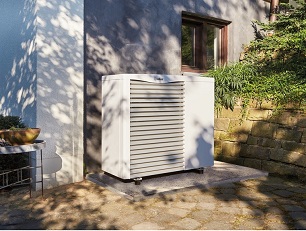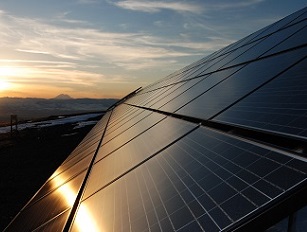Here at City Plumbing, we are committed to helping the construction industry embrace environmentally friendly build options with the vision to make energy efficiency a staple part of any new build or retrofit project. Since our Energy Efficiency Team was launched back in 2010, we have provided impartial advice, specifications, and design services for a wide range of projects. But are we doing enough as a country to move towards an environmentally friendly future?
The recent abandonment of the Green Homes Grant means that the government is now relying on other green stimulus policies like the Renewable Heat Incentive (RHI) to help the country reach its target of hitting zero carbon emissions by 2050. Given this turnaround from the government less than six months after its initial announcement of the Green Homes Grant, we wanted to investigate how the UK currently ranks compared to the rest of the world in terms of energy sustainability and renewables, as well as other areas that will need to be embraced in order to secure an environmentally friendly future.
To get the full picture of how environmentally friendly the UK is compared to the rest of the world, we decided to assess a variety of metrics that encapsulate green living for twenty major worldwide cities, in order to create our ‘Green Index’ and highlight which areas require the greatest improvement for the UK moving forward.

The UK’s ‘Green Living’ Score Leaves Room for Improvement
To determine how the UK compares to the rest of the world in areas related to sustainability and green living, we put together an index based on eight key categories.
- The first category is renewable energy use, essentially assessing how much of the energy used in each city is renewable.
- The second category is the rate of carbon emissions.
- The third category is traffic congestion times, assessing how many hours the average citizen of each city spends in traffic a year.
- The fourth category relates to the rates of bicycle usage, and the fifth category is walkability - put simply, how many amenities are within walking distance.
- The final categories relate to the quantity of green space in each city, the air quality in each city, and their respective recycling rates.

We used various authoritative sources to gather the data for each city, before assigning scores in each category to show how each country ranks in the pursuit of environmentally friendly living.
The World Greenest Major Cities
Highlighting the work that is still to be done if the UK is to meet its carbon neutral target by 2050, London falls into the bottom half of our ‘Green Index’, with key areas for improvement highlighted in renewable energy use, air quality and carbon emissions.
With only 9% of energy used in the capital coming from renewable sources, it is falling far behind the top ranked city of Rio de Janeiro which boasts 44% renewable energy use.
With such reliance on non-renewable energy sources, it is perhaps no surprise to see London also ranks poorly for its carbon emissions and air quality. However, there is better news when it comes to available green space, walkability, and recycling.
Green Spaces in London
A third of the city (33%) is comprised of parks or gardens and 80% of residents able to walk to education and healthcare services without the use of a car, while 43% of London’s waste is recycled in some capacity too.
The data reinforces the considerable impact that moving towards carbon neutrality through energy efficient home improvements could have on the capital, enabling them to ‘catch up’ to higher performing areas of green living.
Examples to follow
In terms of cities where London can take inspiration, our ‘Green Index’ highlights Berlin as the leading example of green living, coming out with the highest total score across all eight categories.
Berlin had the highest rate of recycling of all the cities involved in the study, with 65% of all waste being reused in some way. The German capital also ranked above London for renewable energy use, carbon emissions and air quality.
Green Spaces in Berlin
How can we all do our part?
Acting with the environment in mind can sometimes feel like an uphill struggle, but there are things that we can do to enact real change.
Some methods have become widespread in recent years, for example the push to re-use plastic bags when going to the supermarket is now very popular.
According to the Committee on Climate Change, 14% of the country’s carbon emissions come from heating our homes, and there are several energy efficiency solutions that can help your home utilise energy that is either renewable or much less harmful than traditional solutions.
Underfloor heating can distribute heat evenly around a room and will often reduce the usage of traditional heating systems that are more damaging to the environment.
Air Source Heat Pumps capture heat from the air using the refrigeration cycle. They then provide heat to properties through radiators, underfloor heating and hot water via suitably sized cylinders.
Solar Thermal systems are another method of reducing a home’s traditional energy usage, by collecting heat from the sun using solar panels/collectors which is then used to heat up water stored in the property’s hot water cylinder, avoiding the reliance on gas or electricity.
Renewable Heat Incentive (RHI) – This is paid to householders who generate heat through renewable technology (heat pump, biomass, solar thermal) and takes the form of a quarterly payment for 7 years. Homeowners, landlords, social housing providers and self-builders are eligible. The tariffs have evolved over the years to favour heat pumps, with air source in particular benefitting. Domestic RHI has been extended and is now scheduled to end 31st March 2022 at which point the Government are looking to introduce the Clean Homes Grant which would provide upfront funding of a set amount, rumoured to be around £4000.
Other factors that could help the environment
The Social Housing Sector is aiming to increase energy efficiency within their housing stocks. Devolved governments have variations but essentially targets have been set for all social housing stock to meet a minimum EPC rating of C by 2030. The Climate Change Committee have recently proposed that this date should be brought forward to 2028 which, coupled with the challenges of Covid, would mean an acceleration in programmes over this decade.
How can City Plumbing support you?
City Plumbing can provide energy efficiency solutions for your home, including underfloor heating, solar thermal panels, and biomass boilers.
Our dedicated in-house team of design and estimating experts can specify and design the appropriate products for your energy saving home improvement jobs, leaving your home more eco-efficient.
To find out more about energy efficiency solutions, click here.
Other articles

Everything you need to know about the Green Homes Grant
04 Mar 2022 ・ 8 mins

How to become a renewable energy engineer
03 Mar 2022 ・ 7 mins

Electric or water underfloor heating? An installer's guide
03 Mar 2022 ・ 5 mins



